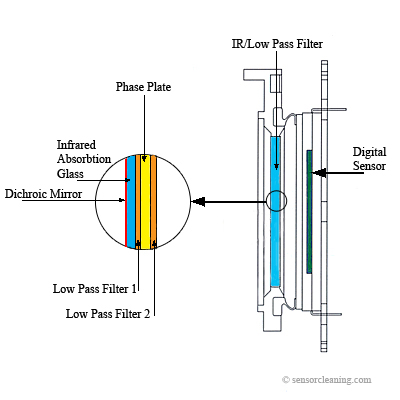Infrared Reduction / Low Pass Filters
A low pass filter, as it pertains to a digital SLR camera, is an optical low pass filter that allows certain wavelengths to pass while reducing or disallowing all others. This is used to combat colour aliasing and moiré artifacts in the images. This was accomplished in the past by increasing the birefringent (double refraction) index of the material, usually monocrystalline silica, used to compose the filter. This, unfortunately, had the side effect of blurring the images in these particular areas and usually needed software algorithms to make adjustments. Today advanced proprietary technologies from some of the bigger digital SLR companies are making great advancements in the reduction of distorting artifacts.
Nikon, starting with the D200, has introduced a new technology where they have replaced the silica crystal optical low pass filter with a thin, newly developed material that has a high birefringent index. Along with their image processing engine it is possible to have the filter set at a lower birefringent index, thus increasing resolution and reducing any artifacts.
Canon, with the development of their new CMOS digital sensors with higher pixel counts, also developed a new technology for their optical low pass filter. A special three layer filter system was developed with an additional two layers of infrared absorption and reflection. This filter system was developed to allow for meticulous data separation and improvement of light reception across more than one pixel, therefore, minimizing aliasing and moiré.

- dichroic mirror - reflects infrared light
- infrared absorbtion glass - absorbs infrared light
- low pass filter 1 - seperates subject horizontally
- phase plate - converts linearly polarized light into circularly polarized light
- low pass filter 2 - seperates subject data vertically
